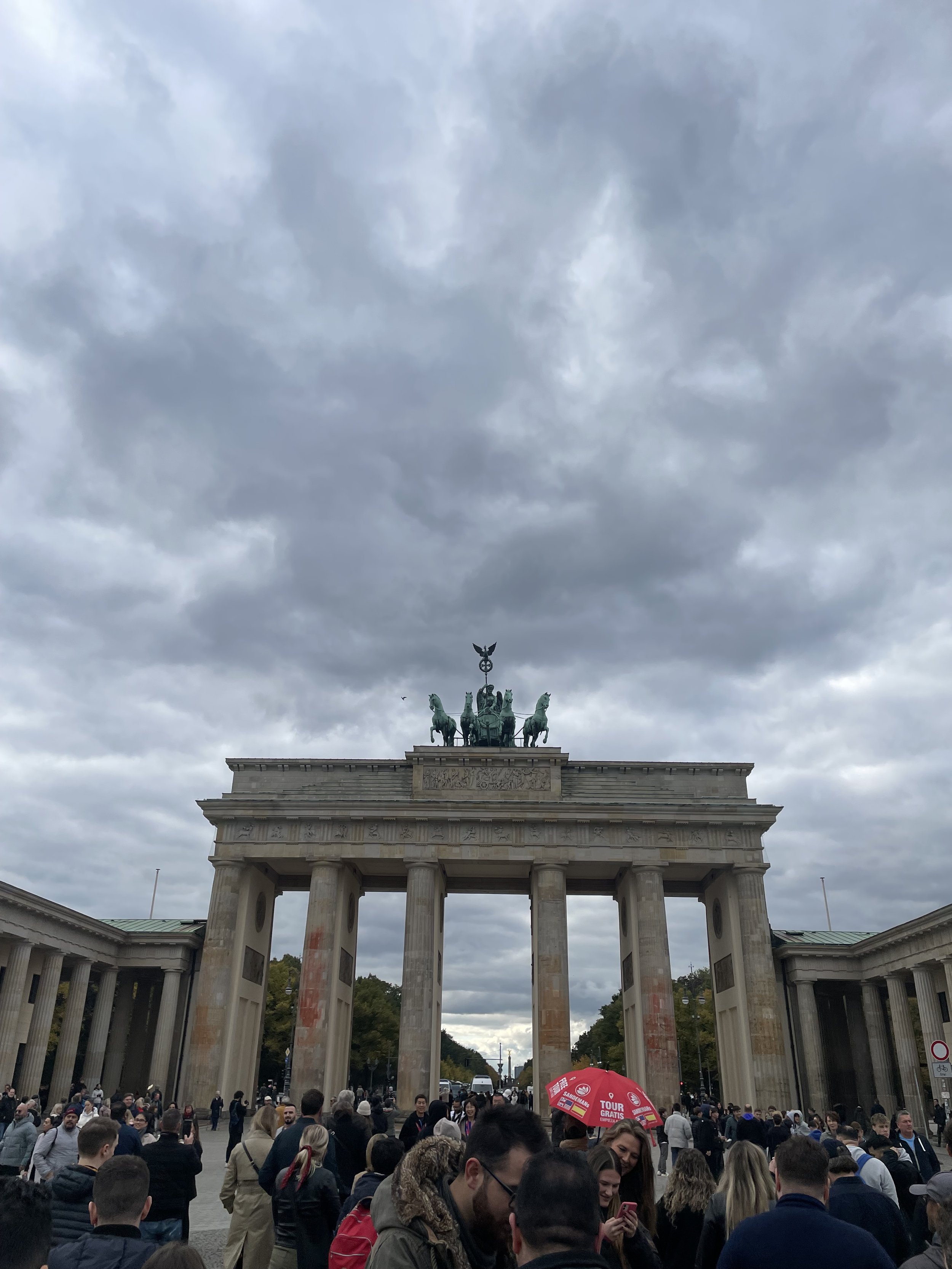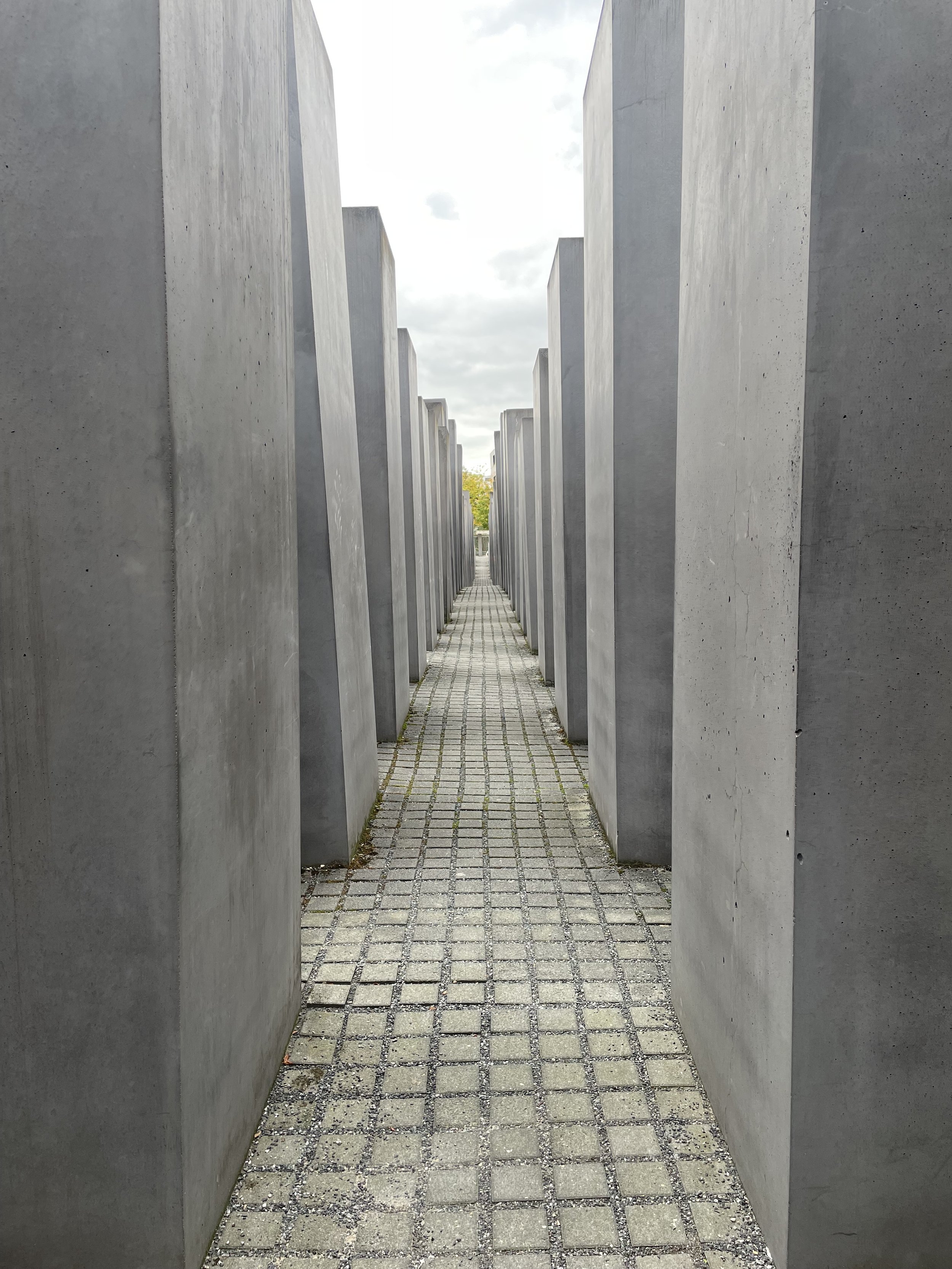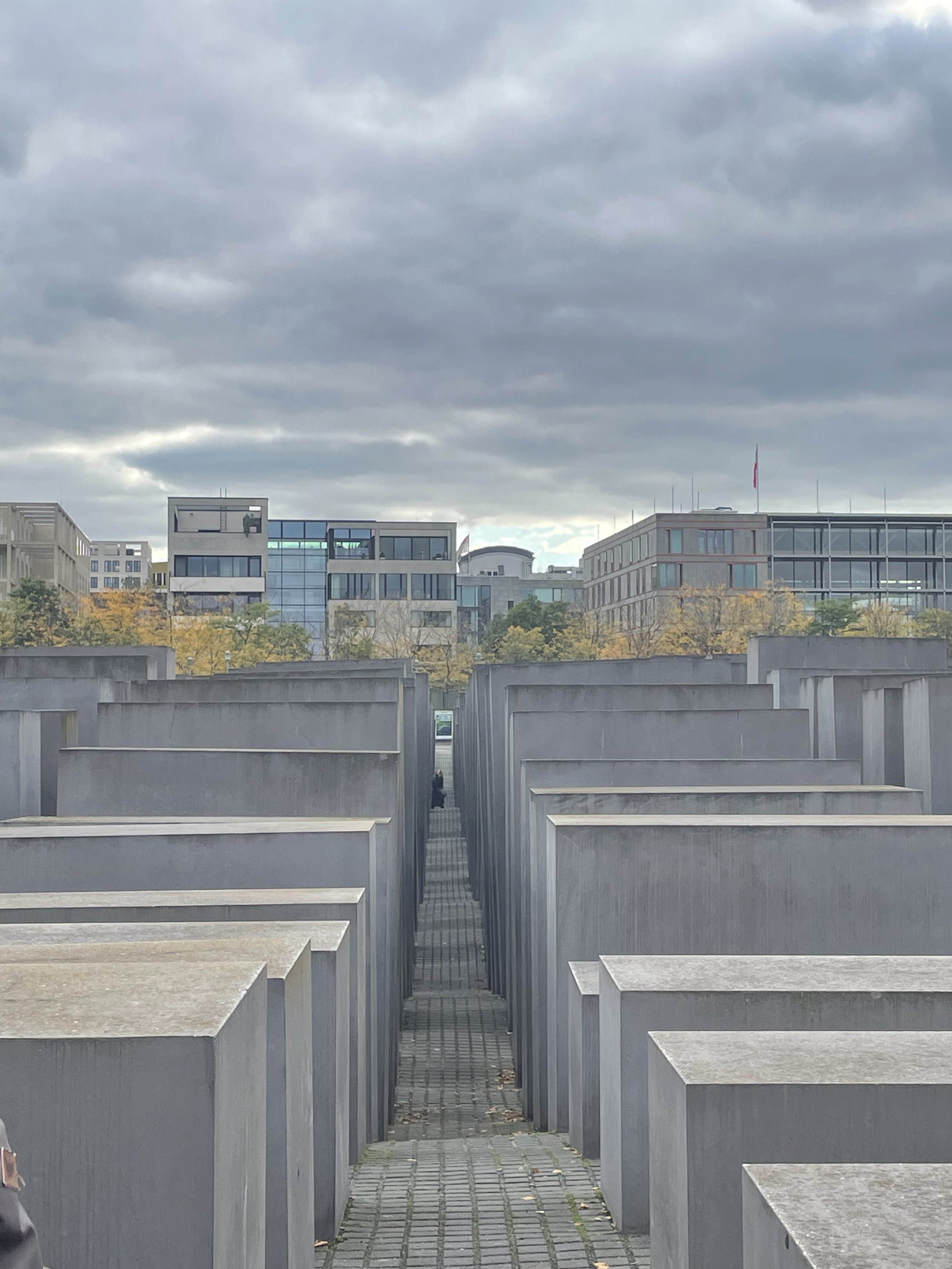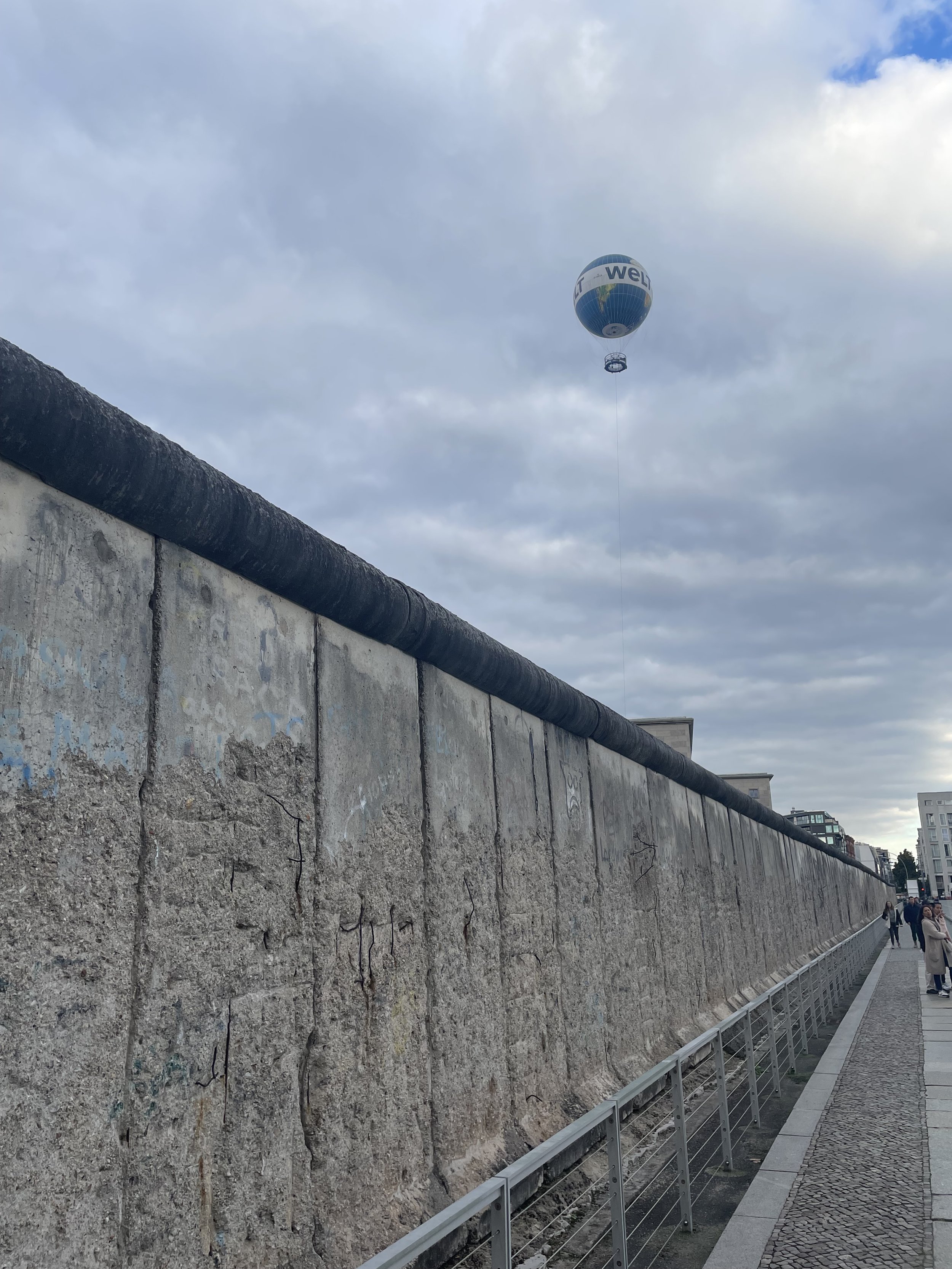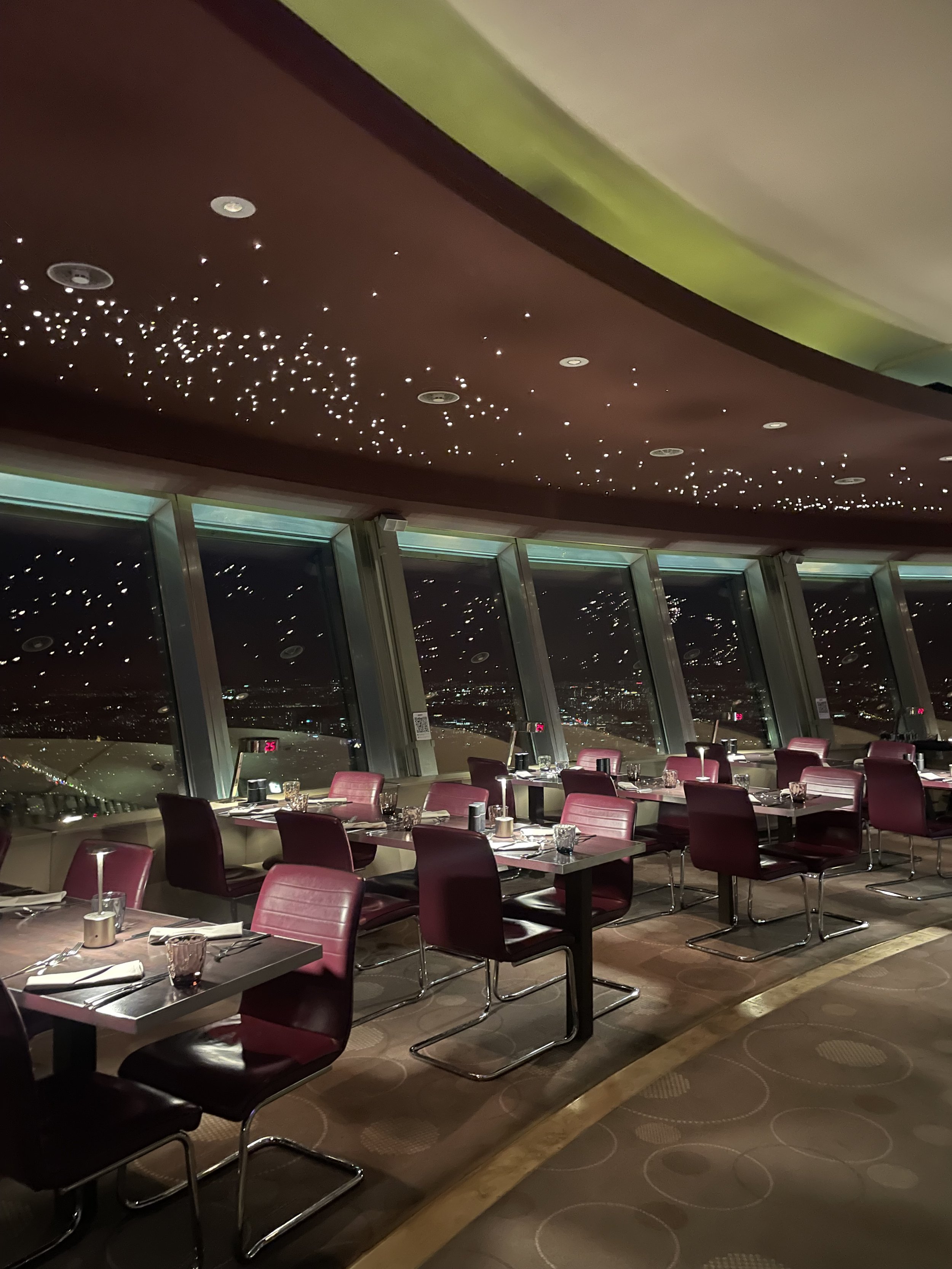Day 1 - orientation and a high place for dinner
We had a nice early-ish flight from London City Airport to Berlin. We managed to get this flight using reward points from the AMEX card, so the flights cost us £98 for two. City airport is great, as it is small, so takes no time to get your bags checked in and through security. We had a slight delay, which was annoying as we had a 2pm guided tour planned which was looking at risk!
We eventually landed in Berlin airport and decided the only way to possibly make it was to get a taxi. Forty minutes later and we dropped our bags at the hotel and sped walk to Brandenburg Gate to meet our guide. Juan was originally from Uruguay, but lives in Berlin whilst studying European history at University. There were around 25 people on our tour.
We started at Brandenburg Gate where Juan explained it as a symbol of German reunification. It was built in 1791 and was a place where people gathered for celebrations and was a symbol of peace. When the Berlin wall was erected in 1961, the gate stood in an exclusion zone (a no mans land). He explained about the area we were in and how many embassies are now on the square around the gate. No building is allowed to be higher than the gate.
Our next stop was the Memorial to the Murdered Jews of Europe. This was an open area where there are 2,711 concrete slabs (coffin shape) which are laid out on a grid pattern at different heights. It was constructed in 2004. The idea is that you walk amongst the structures and are made to feel confused and claustrophobic - how Jews would have felt during the Second World War. Over 6,000,000 Jews were killed in the Holocaust. We were given ten minutes to walk around the slabs and I can say that the area was very moving indeed.
We then walked through an estate of flats, which were very grey and functional and stopped at a child’s sandpit. We were told that this was on top of Hitler’s bunker where he killed himself. Juan actually spent very little time here, because he said that the tour should be about survivors rather than persecutors.
Our last stop of the tour was at part of the remains of the Berlin Wall. The Berlin Wall was erected in quite recent history. The Berlin Wall was a physical barrier constructed by the German Democratic Republic (East Germany) that divided East and West Berlin from 1961 to 1989. Its primary purpose was to prevent East Berliners from fleeing to West Berlin, which was governed by the Federal Republic of Germany.
Following World War II, Germany was divided into four occupation zones controlled by the Allied powers: the US, UK, France, and the Soviet Union. Berlin, located within Soviet-controlled East Germany, was also divided into four sectors.
Tensions between the Soviet Union and the three other Allied powers grew, leading to the onset of the Cold War. In 1949, West Germany was established, and its capital, Bonn, became the Federal Republic. Meanwhile, East Germany, with East Berlin as its capital, remained under Soviet control.
As tensions escalated, more than 2.5 million East Germans fled to the West via West Berlin, taking advantage of the open border that existed until 1961. This mass exodus, known as the “brain drain,” was a significant blow to the East German economy and communist regime.
On August 13, 1961, the East German government began building the Berlin Wall. Initially consisting of barbed wire fences, it soon evolved into a complex system with concrete walls, guard towers, anti-vehicle trenches, and wide “death strips” cleared of vegetation to provide a clear line of sight for border guards.
The wall stretched for 96 miles across the city.
It’s so hard to imagine what life would have been like living with a whopping great wall around you, but you can still very much see the difference between the architecture of East Germany (quite stark and functional) vs West Germany (more ornate)
Our excellent tour at and end, we whizzed back to the hotel to get showered and off to our next adventure. We caught the tube (the U-bahn) to the Alexanderplatz area - where there are lots of shops and looked up to see the Fernsehturm Berlin (TV Tower). It is SO tall! It was constructed in 1969 and is 1,207 feet tall - the tallest in Germany.
It’s main function is a TV and radio transmitter but it is also a viewing deck for tourists and has a revolving restaurant. We arrived just as the sun was setting and managed to catch a few parts of Berlin looking beautifully orange. The observation deck was packed.
After walking around the whole thing, we headed up a level to the restaurant.
It was strange. I couldn’t tell if it was me moving, the windows or the centre. Turns out it was me! We had a very nice waiter who brought us welcome drinks and menus and we ordered a lovely meal. I had the best pumpkin soup I have ever tasted! Now it was dark outside and we gazed over Berlin with it’s buildings lit up and twinkly. The meal was delicious and a real treat.
We decided to walk back to the hotel. We passed the opera house and there was a busker playing the violin so we had a small dance in a huge empty square and then made our way back to our very nice hotel for a well deserved sleep.

